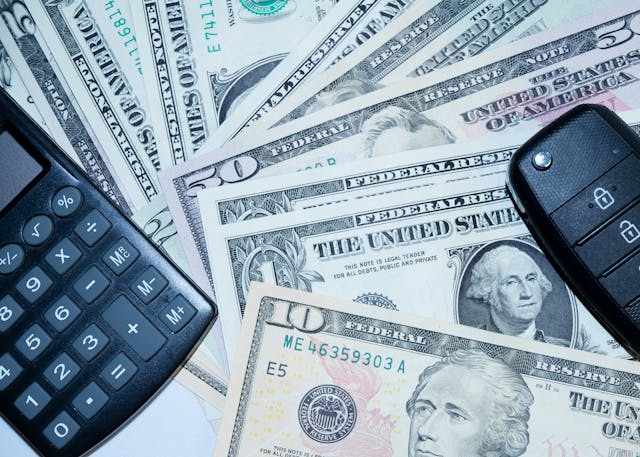In Ohio, the purchase of an automobile is inevitably entwined with the intriguing complexity of auto sales tax – a significant cog in the fiscal machinery of the Buckeye State. This crucial tariff plays no small part in curtailing the state’s overall financial shortfall while simultaneously stimulating infrastructural growth through its influx from vehicle acquisitions. Indeed, this levy on auto sales emerges as a vital fulcrum upon which Ohio balances her sustained fiscal vitality.
A comprehension steeped in depth about Ohio’s intricate web of auto sales taxation becomes indispensable for both denizens and non-residents alike who wish to navigate their way through vehicular acquisition within this state. It acts as an illuminating beacon shedding light on additional costs that might be lurking unseen during their journey towards finalizing their automotive purchase. These often overlooked expenses form integral pieces of the final cost puzzle and thus underline why understanding this system assumes such importance.
This knowledge serves to empower these buyers by equipping them with insights needed to make well-informed decisions, concurrently infusing greater transparency into what can sometimes feel like a labyrinthine process.
The Structure of Automobile Transaction Levies in Ohio
Within the boundaries of Ohio, an organized method for deciphering car transaction fees – colloquially referred to as sales tax on automobile purchases – is firmly in place. The nucleus of this taxation model hinges on the retail selling price of a vehicle, all while factoring in specific allowances or trade-ins that could potentially lessen the final sales tax sum. It’s crucial not to overlook that Ohio’s taxation rate fluctuates based upon county, currently oscillating between 6.5% and 8%.
In addressing the oft-posed query: “How does one calculate automobile sales tax within Ohio?”, it boils down to uncomplicated mathematics. This computation considers the aggregate selling price prior to any permissible deductions being taken away. Post determination of taxable value, it’s multiplied by whichever county-specific sales tax percentage applies at that point in time; these rates are not fixed but instead shift throughout various regions within Buckeye State. Grasping this taxing scheme can greatly assist when projecting total fiscal obligations accompanying an automobile purchase in Ohio.
How Does the Automobile Levy Function in Ohio?

The enigma of Ohio’s unique taxation approach regarding vehicle purchases is one that often leaves individuals perplexed. The effective sales tax rate, it appears, hinges on the residential county of the buyer, making this levy a somewhat elusive creature within the realm of state-regulated transactional exchanges for vehicles.
One question frequently surfacing in this mysterious context is: “Does Ohio impose a 7.5% sales tax?” This inquiry merits an answer woven with complexity and variation—the rate of automobile sales tax in Ohio isn’t a fixed entity but swings between 5.75% and a potential zenith of 8%.
In accordance with Ohio’s intricate automotive taxation blueprint, the tax amount emerges from multiplying the total price tag on your vehicle by whatever current percentage haunts your county at purchase time. Thus, we find ourselves tethered to two variables—the costliness or otherwise economical nature of our chosen car and our geographical positioning within Ohio’s administrative divisions—as they determine our final tax toll.
This draws us back into the vortex surrounding that central question – Does Ohio have a 7.5% sales tax? In exploring this labyrinthine financial landscape further, we understand that if you happen to acquire your new ride in a county where fate has decreed an exacting standard rate as high as 7.5%, then yes indeed—your applied auto-sales-tax will echo this figure precisely.
However, remember always that like shifting sands under moonlight; these numbers are not set in stone but subject to ebb and flow influenced by overlapping factors—an enthralling dance choreographed by various elements playing out their roles behind-the-scenes.
- The Ohio automobile levy operates on a variable sales tax rate that ranges from 5.75% to 8%.
- This variability is dependent upon the residential county of the vehicle buyer, thus making the exact rate elusive and unpredictable.
- A common question asked by many potential buyers is whether Ohio imposes a flat 7.5% sales tax on all vehicle purchases.
- The answer to this query, however, isn’t straightforward due to the fluctuating nature of Ohio’s auto-sales-tax system.
- To calculate your final tax toll in Ohio, you must multiply your vehicle’s total price tag with the current percentage applicable in your county at purchase time.
- Thus, both factors—the cost of your chosen car and your geographical location within Ohio—determine how much you will ultimately pay in taxes for your new ride.
In conclusion:
- If you happen to buy a car in an area where fate has set an exacting standard rate as high as 7.5%, then yes—your applied auto-sales-tax will reflect this figure precisely.
- However, these numbers are not static but subject to change according to various overlapping factors—an intriguing dance choreographed by different elements playing out their roles behind-the-scenes.
- Therefore it is always advisable for buyers intending on purchasing vehicles within any region of Ohio state—to stay updated regarding their respective county’s prevailing automotive taxation rates.
Decoding the Buckeye State’s Vehicle Purchase Taxation System
In the Buckeye State, one might initially perceive the tax scheme related to automotive transactions as intricate. However, on closer inspection, it unravels into a relatively lucid system. To address a query often puzzling potential vendors – “Is it possible to vend an automobile for $1 in Ohio?” The response is affirmative, albeit with taxation repercussions to contemplate.
Ohio law permits vehicles sales at any price point including a mere dollar – yet this doesn’t imply immunity from sales levy. The state’s sales tax applies universally across vehicle transactions and hinges upon either the gross selling price or mutually agreed value of the car whichever scales higher.
This insinuates that even if you strike a deal for as low as $1 for your vehicle, it still draws obligatory sales tax based on its authentic value. This taxable worth is computed by none other than Ohio Department of Taxation which adheres to a standard depreciation schedule.
Thusly, neither buying nor selling an automobile at $1 will help evade this state-imposed duty; rather it pegs the due levies to potentially loftier valuation.
Assessing the Impact of Car Purchase Taxes on Ohio Residents
In the heartland state of Ohio, a pivotal factor for citizens contemplating an automobile purchase is the calculation of sales tax on vehicle acquisitions. This tax, emerging from the car’s purchasing cost, profoundly sways the aggregate expenditure tethered to securing a new or pre-loved motorcar. A multitude of prospective purchasers often query “what is the sum total of sales tax on an auto in Ohio?”, thus highlighting the importance of comprehending that this midwestern state levies a 5.75% taxation rate on all transactions involving motor vehicles.
This imposed duty can considerably shape consumer decision-making dynamics, steering their preferences among varied vehicle categories, makes and models towards more pocket-friendly alternatives. The supplementary economic load brought about by Ohio’s sales tax could potentially drive future buyers to rethink their financial plans and settle for lower-priced autos instead. As time progresses, such tendencies could reshape Ohio’s automotive ownership demographics favoring lower-end or previously owned vehicles.
Factors Influencing Vehicle Purchase Taxation in Ohio
In the realm of the Buckeye State, a duet of primary facets wield substantial influence on the computation of taxes levied on vehicle purchases. Foremost among these is undoubtedly the purchase price, a figure that exerts significant sway over tax amounts. As Ohio operates under a graduated system, an escalation in purchase price will invariably trigger an amplified tax obligation.
Furthermore, it’s pivotal to remember that your chosen chariot matters; luxury cars often bear hefty taxes compared to their standard or economy brethren due to their inflated asking prices.
The residential county of the buyer introduces another layer of complexity. In Ohio’s landscape, variations in county tax rates can tilt the scales and modify final tax totals owed by shoppers. It thus becomes essential to highlight that some locales might boast slightly elevated local tax rates than others – resulting in incremental increases in one’s overall tax commitment.
Moreover, any discounts or incentives dangled by dealerships or manufacturers at point-of-sale could also add unpredictability into your taxation equation – potentially subtracting from your taxable purchase cost.
Comparing Ohio’s Automobile Taxation with Other States
In the grand tapestry of automobile taxation comparisons, Ohio’s structure emerges as a unique embroidery when juxtaposed against the contrasting hues of other states. Like an extensive majority of America, Ohio extracts a sales tax from vehicle transactions. However, the peculiarity lies in the percentage variability dependent on one’s county domicile – an aspect that differentiates it from states such as Florida or Virginia where there exists a steadfast uniformity in state-wide tax rates on vehicular acquisitions.
The intriguingly specific county-centric model for vehicle sales taxes implemented by Ohio can surge to peaks as high as 8% within certain counties. This produces quite a chasm with those states maintaining more modest tax rates; New Hampshire and Oregon for instance have mastered the art of equilibrium with their 0% stance on this front – imposing no tithe whatsoever upon vehicle purchases. In stark contrast however are regions like California who push their boundaries even further reaching zeniths up to 9.5%.
Henceforth, amidst this vast panorama of diverse state policies around vehicular purchase taxation is nestled Ohio. It neither scrapes at bottom-most troughs nor does it scale topmost heights but rather oscillates somewhere along that broad continuum – presenting itself not as either extreme but instead something comfortably intermediate.
FAQ
The framework of such pecuniary duties associated with vehicular transactions in Ohio hinges on both the sales price and the tax rate that is relevant to the county where procurement takes place.
Within Ohio’s borders, this particular financial imposition is generally enforced at point-of-sale, with dealership personnel tasked with its collection and subsequent remittance to state authorities.
Certainly. The method by which vehicles are taxed upon purchase in Ohio revolves around a percentage calculation based on purchase amount. This specific rate may fluctuate depending on the county where acquisition occurs.
For residents of Ohio, their interaction with these auto levies directly impacts any vehicle’s final cost. Higher priced purchases will result in greater taxes paid, thus escalating total ownership costs as well.
Numerous factors hold sway over taxation during a vehicle purchase within our great state of Ohio; these include not only geographical considerations like county but also factors concerning specific transaction details like pricing or potential trade-in allowances and rebates.
Iit varies significantly from one state to another due to differing tax structures; there certainly exist instances wherein some states levy lesser rates than we do here in ohio just as there are places charging higher rates. Comparisons ultimately hinge upon each individual state’s unique tax architecture
The answer would indeed be affirmative – potential exists for certain exceptions and reductions within our state’s system. For example, allowances for trade-ins can potentially reduce a vehicle’s taxable purchase price. To obtain the most accurate details, consulting with a tax professional is advisable.
In general terms, no – the specific type of vehicle doesn’t usually play into how taxes are calculated here in Ohio as it typically relies on the vehicular purchase price instead. Notwithstanding this rule, certain types of vehicles or particular situations may present exception to said norm.


